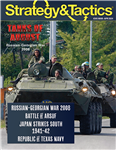
|

|

|

|
 |
|
Strategy & Tactics Issue #345 - Magazine
|
|
|

The Tanks of August: The Russian-Georgian War of 2008 The Soviet Republic of Georgia endured three wars during the years of the collapse of the USSR: the Georgian Civil War (1991–93), the South Ossetia War (1991–92) and the Abkhazia War (1992–93). That left the country devastated and divided, and set the conditions for the five day war against resurgent Russia in August 2008.

|

|
 |
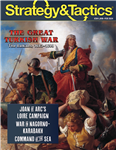
|

|

|

|
 |
|
Strategy & Tactics Issue #344 - Magazine
|
|
|

The Great Turkish War: 1683–1699 During the second half of the 17th century, the Ottoman Empire was invigorated by the leadership of the Koprulu family. The third in that line, Kara Mustapha, set the most ambitious objective of all: to impose Turkish dominance over Central Europe. He planned to begin by taking Vienna, the city the Turks called the “golden apple.” Here is our analysis of his failure.

|

|
 |

|

|

|

|
 |
|
Strategy & Tactics Issue #343 - Magazine
|
|
|

Operation Albion & The Baltic Campaigns: 1917–18 In 1917 there were two Russian Revolutions. The first overthrew the Romanov dynasty, and the second put the Bolsheviks in power. That same year the Germans launched an offensive on land that captured Riga, and followed that up with an amphibious invasion of strategic islands in the Baltic Sea—Operation Albion.

|

|
 |
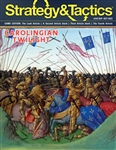
|

|

|

|
 |
|
Strategy & Tactics Issue #342 - Magazine
|
|
|

Carolingian Twilight: The Frankish kingdom reached its zenith as the Carolingian Empire during the reign of Charlemagne (771–814), but it sundered when his grandsons fought each other for control.

|

|
 |

|

|

|

|
 |
|
Strategy & Tactics Issue #341 - Magazine
|
|
|

Return to Europe: Sicily & Italy, July—November 1943 In January 1943 Anglo-Allied leaders met in Casablanca to map the next act in the war on Germany. The invasion of Sicily that July was a logical follow-up to Tunisia, but crossing to mainland Italy did not appear necessary. Even so, that occurred due to a combination of circumstance and the lack of an alternative.

|

|
 |

|

|

|

|
 |
|
Strategy & Tactics Issue #340 - Magazine
|
|
|

Decisive Battles of the French & Indian War Both France and Britain established colonies in North America early in the 17th century, and their competition to dominate those lands and its trade led to a series of wars. Those conflicts in turn forged a new era of warfare while also deciding the fate of North America for centuries.

|

|
 |
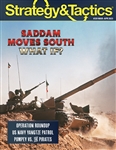
|

|

|

|
 |
|
Strategy & Tactics Issue #339 - Magazine
|
|
|

Saddam Moves South: What If? On 2 August 1990 the Iraqis rolled into Kuwait, quickly seizing the country. The response of the US was immediate, with President George Bush (the elder) mobilizing a Coalition to fight the invaders. A major concern among Western and Mid-East leaders was the possibility of Saddam immediately continuing into Saudi Arabia. What could have happened had he moved south?

|

|
 |
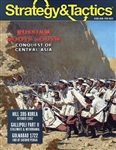
|

|

|

|
 |
|
Strategy & Tactics Issue #338 - Magazine
|
|
|

Russian Boots South: Conquest of Central Asia: In 1840 Central Asia was a distant frontier for the Russian Empire, but within 50 years the region had been fully integrated into the Czar’s realm. That was accomplished only after many hard-fought campaigns across the area’s vast deserts and steppes.

|

|
 |
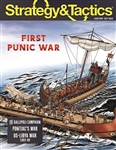
|

|

|

|
 |
|
Strategy & Tactics Issue #336 - Magazine
|
|
|

The First Punic War: A Strategic Analysis: For 24 years the Carthaginian Empire engaged the Roman Republic in a conflict that became known as the First Punic War (264–41 BC). While the Second Punic War (218–01 BC) is better known, the earlier war laid the foundation for Rome’s dominance.

|

|
 |

|

|

|

|
 |
|
Strategy & Tactics Issue #335 - Magazine
|
|
|

What If: Malta Invasion 1942: By early 1942 various senior German and Italian commanders were calling for the conquest of Malta. The dilemma was in finding forces for such an operation. This is our analysis of how those forces were indeed gathered, but were then squandered elsewhere than Malta to little good effect for the Axis.

|

|
 |